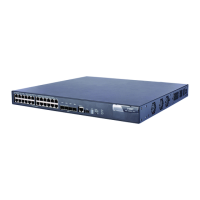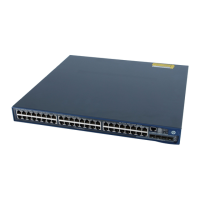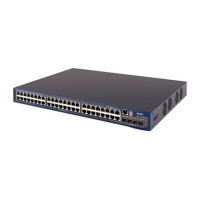101
10/100/1000Base-T Ethernet port
All A5820X and A5800 switches but the A5800-24G-SFP (1 slot) and the A5800-24G-SFP TAA (1 slot),
have 10/100/1000Base-T Ethernet ports.
Table 18 10/100/1000Base-T Ethernet port specifications
10 Mbps, full duplex
100 Mbps, full duplex
1000 Mbps, full duplex
MDI/MDI-X, auto-sensing
Max transmission
distance
Category-5 (or above) twisted pair cable
IEEE 802.3i, 802.3u, 802.3ab
100/1000Base-X SFP port
The A5800-48G-PoE+ (2 slots), A5800-48G-PoE+ TAA (2 slots), A5800-24G-SFP (1 slot), and A5800-
24G-SFP TAA (1 slot) switches have 100/1000Base-X SFP ports, and you can install the 1000 Mbps SFP
transceiver modules in Table 19 and the 100 Mbps SFP modules in Table 20 in the ports.
Table 19 1000 Mbps SFP transceiver modules available for the 100/1000 Base-X SFP ports
Cable/fiber
diameter
(µm)
Multimode
fiber modal
bandwidth
(MHz × km)
Max
transmission
distance
HP X120 1G SFP RJ45 T
transceiver
HP X120 1G SFP LC SX
transceiver
HP X120 1G SFP LC LX
transceiver
HP X125 1G SFP LC LH40
1310nm transceiver
HP X120 1G SFP LC LH40
1550nm transceiver

